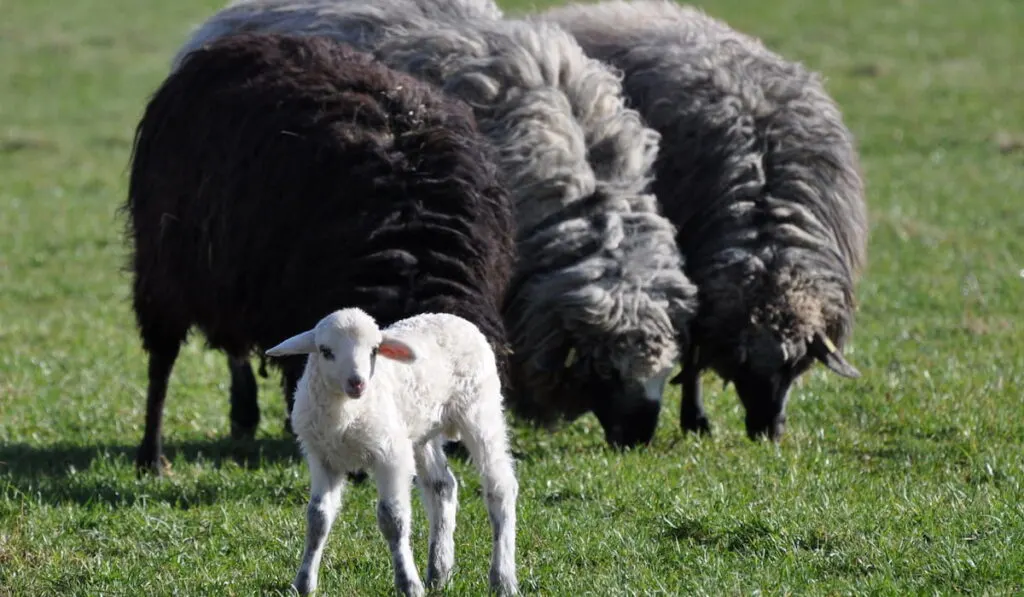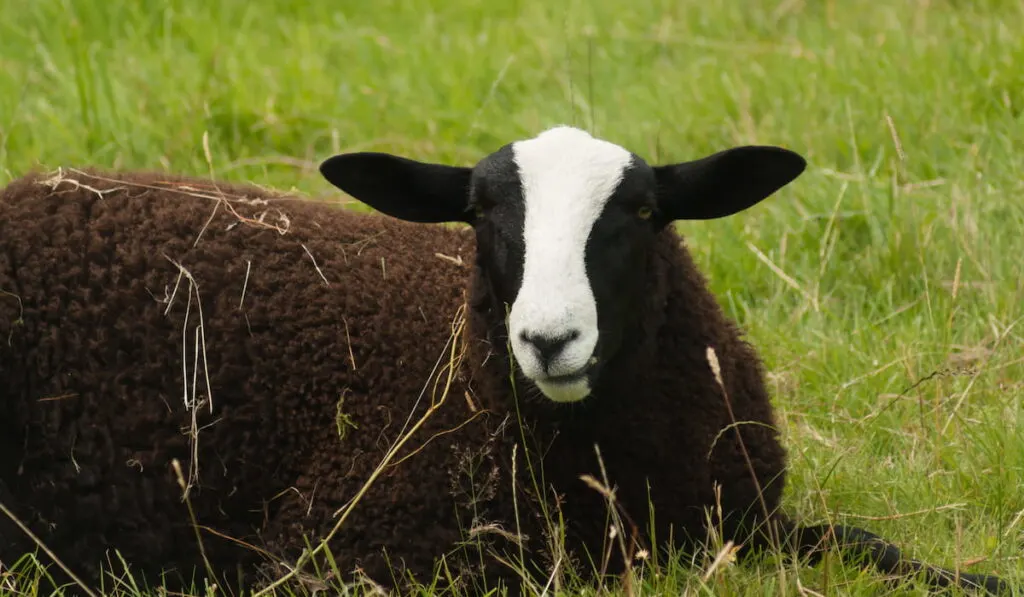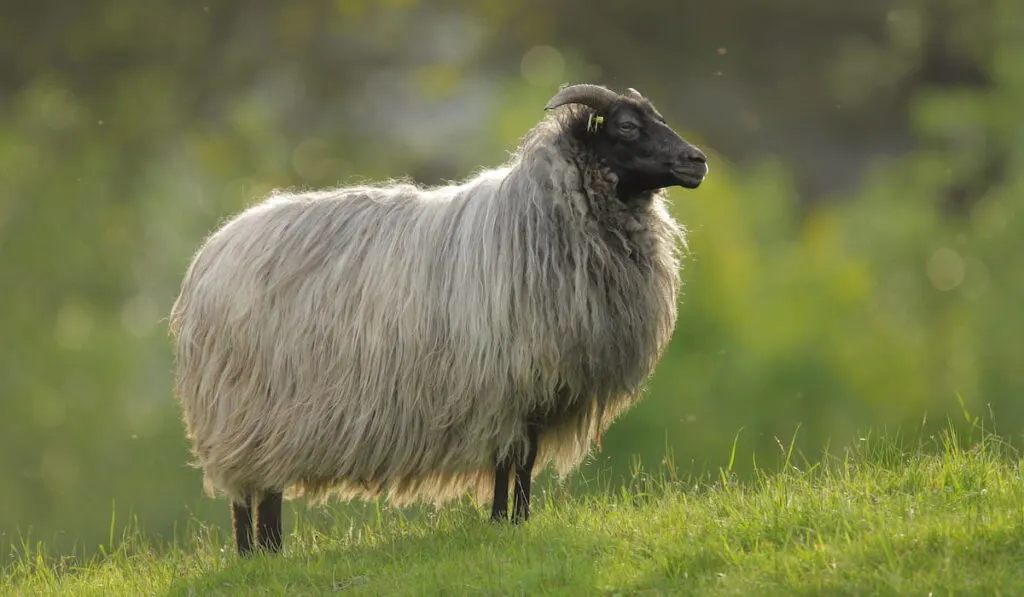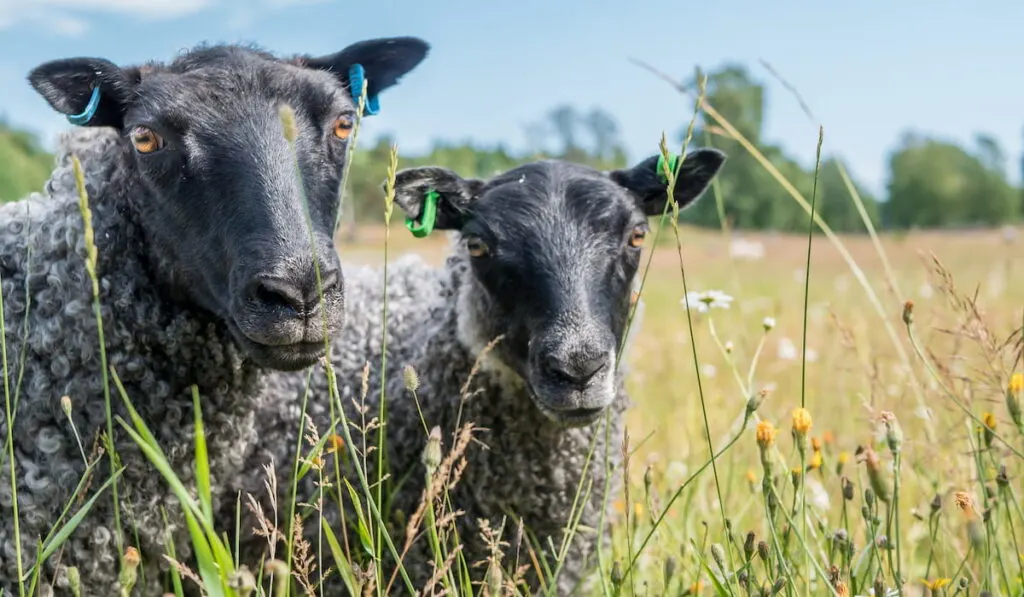You may have heard the baa-baa-black sheep poem. But have you ever actually seen a black sheep? Chances are you have seen a white sheep but maybe not a black one.
White sheep may be the more common variant of the quadrupedal ruminant animal.
But black variants exist too. In case you have not seen them before, we came up with this concise compilation of some black sheep breeds.
Alcarrena
Alcarrena is a sheep breed with Spanish origins. It is a medium-wooled sheep found in three regions of New Castile: La Alcarria, Cuenca, and Guadalajara.
The Alcarrena sheep are bred for their meat. They are of the entrefino class, meaning the breed is a cross between the merino and coarse-fleeced types.
While the Alcarrena is usually white, sometimes, it can be all black. Other times, it may have light-brown coloration on its legs and head.
Alpines Steinschaf

The Alpines Steinschaf is a small to medium-sized sheep native to the Eastern Alps of Austria and southern parts of Germany.
The Alpines Steinschaf is bred for meat and wool. It may also be kept to control the growth of grass. They come in various coat colors, including black, and they can be either horned or polled.
On average, Alpines Steinschafs weigh between 88 and 176 lbs. The rams are typically heavier, weighing 121-176 lbs. The ewes, on the other hand, are lighter, weighing 88-132 lbs.
Balkhi
Balkhis are a breed of domesticated sheep native to northwest Pakistan and Afghanistan. While it is mainly used for meat, it may also be used for wool production.
Balkhis have fat, tucked tails, and both genders are horned. Their ears are a bit long, and their bodies are compact and muscular.
Balkhis come in tan, black, or grey coats, and they are quite hardy. On average, an adult Balkhi will weigh around 154 lbs.
However, the rams are typically heavier than the ewes. A newborn ram weighs about 11 lbs. while ewes weigh 8.4 lbs.
Balwen Welsh Mountain

As the name reveals, the Balwen Welsh Mountain originated from Wales, specifically the Tywi Valley. Due to its extreme hardiness, it has been dubbed a sheep for all seasons.
Sheep of the Balwen Welsh Mountain breed are easy to rear. They also have few health issues. Their coats are either black, dark grey, or dark brown with a white blaze on their face.
The Balwen Welsh Mountain sheep are principally bred for meat. The rams are heavier than the ewes, with an average weight of 99-132 lbs. compared to 88-110 lbs for ewes.
Bavarian Forest Sheep
The popularity of this breed of small to medium-sized sheep is progressively declining. The Bavarian Forest sheep breed originated from Bavaria, Germany, where they were once ubiquitous.
One noteworthy feature of this breed is its fleece, which comes from a mixture of fibers. These fibers include wool, kemp, and hetero fibers. While the Bavarian Forest sheep is usually white, it may also be brown or black.
The Bavarian Forest sheep’s lambing rate is about 180 to 200%. Besides this, this breed is highly hardy, showing resistance to various weather conditions and diseases.
Bellary
Bellary sheep are native to India. More specifically, they are found in the following districts: Bellary, the connecting areas of the Chitradurga and Haveri districts of Karnataka, and Davanagere district.
Bellary sheep are medium-sized. They come in black coats and white and black coats of different variations. More times than not, Bellary rams are horned, while the females are polled.
Bellary sheep have short, thin tails, medium-long drooping ears, and highly coarse, hairy fleece. Their legs and bellies have no wool.
Black Hawaiian Sheep
The Black Hawaiian is also called the Black Corsican. The parentage of this breed involves a little controversy.
Some sources claim that it is a cross between European Mouflon and black hair sheep from Hawaii. Other sources believe it is a cross between Mouflon and Barbados sheep.
As the name says, Black Hawaiian sheep have an all-black coat, with wooly undercoat and coarse hair. However, their muzzle may come in white.
Their primary use is for trophy hunting. But besides that, they may be used for meat.
Black Hawaiian rams can weigh as much as 150 lbs. while the females weigh around 100 lbs. The rams may also have a 3- to 8-inch mane on their back.
Black Hawaiian sheep are horned; their horns grow upward, backward, downward, forward, and up again before they form the tip. Like their coat, the horns are black.
Black Hawaiians are pretty social. Their breeding period falls between August and September, and they have a 5-month gestation period.
Criollo
The Criollo sheep has south and central American origins. It has been found in the highlands of Colombia, Mexico, Bolivia, and Ecuador. It has also been seen in Guatemala, Venezuela, and Peru.
Criollo’s are thought to be a descendant of the Churra breed brought by the Spanish settlers in the 16th century.
Criollo sheep are a small breed. On average, an adult male weighs 72 pounds, while the females weigh 57 pounds.
Criollo are reared mainly for their meat. They have carpet-type, coarse fleece wool, which is usually black. But it can also be white or pied.
Deccani Sheep
The Deccani Sheep is native to India. Its name was derived from the Deccan region, where it was widely spread.
The Deccani breed is small and is kept mainly for two purposes: wool and meat. In a year, one sheep can produce up to 5kg of wool.
The sheep of this breed come with black or ash-gray wool, separated and grained. The Deccani breed is said to be the only breed with pure black coarse wool in India.
Male Deccani sheep come with horns while the females are polled. They have short, thin tails and medium-long flat, drooping ears.
Faroes Sheep

The Faroes sheep is native to the Faroe Islands. It appears to have been around since the 9th century.
Faroes sheep have sturdy but light bones, which support their inhabitation of mountainous areas. They are territorial and not friendly.
Faroes sheep come in coats of various colors, including black, chestnut brown, and white. They also come in dark red, grey, and light red.
Faroes sheep are bred mainly for meat. They are hardy and small-sized. On average, the rams weigh 44 to 90 lbs.
The ewes, on the other hand, weigh around 44 pounds. The lambs typically reach 20-45 pounds – the slaughter weight – in about 5 months. The rams have horns while the ewes are polled.
Galician Sheep
The Galician Sheep, also known as Ovella galega, is a domestic breed of Spanish origin. They are small to medium-sized, weighing 44 to 154 pounds, depending on the ecotype.
The Ovella galega has 2 ecotypes: Montana and Marinano. The former stays on higher areas, while the latter on lower areas.
The Montana ecotype has an average weight of 77-99 pounds for rams and 44-77 pounds for ewes. The Marinano ecotype has an average weight of 110-154 pounds for rams and 77-88 pounds for ewes.
Galician Sheep are bred for two purposes: milk and meat. Their coat is either all-black or all-white. Galician rams generally have large horns, while the ewes have small horns or none at all.
German Grey Heath

The German Grey Heath is also known as Heidschnucke. It originated from the Luneburger Heide area (Luneburg Heath) in Germany and is descended from the Mouflon breed.
The Heidschnucke is born with black fleece. But as the lambs grow older, the body turns grey while the bib stays black.
German Grey Heaths are bred for meat and wool. The rams weigh up to 176 pounds, while the ewes weigh around 100 pounds. The rams have curled horns, while the ewes have short horns.
German Grey Heaths come with dual-coated fleece. The fleece of the rams can weigh up to 8.8 lbs. However, those of the ewes can be as heavy as 4.4 lbs.
Gotland

Gotland sheep are a medium-sized breed from Sweden.
The breed is fine-boned, and it gets its name from the Island of Gotland.
Gotland sheep are hornless, have bold, alert eyes, and small, neat muzzles. Their heads are black, free of wool, and sometimes have white markings.
Gotland sheep have silky fleece, which is usually grey. But they can also come in black, brown, or white. In the past, this breed was dual-purpose: kept for meat and wool. But these days, it is reared only for meat.
Sheep of this breed are gregarious. On average, the ewes weigh 121-154 pounds, while the rams weigh 165-187 pounds.
Hebridean

The Hebridean is a short-tailed sheep breed native to Scotland. The members of the Hebridean are generally small. On average, the rams weigh 110-121 lbs. while ewes weigh 84-88 lbs.
However, both genders are horned, with around one-tenth of them having at least four horns. While both genders are horned, sometimes polled ewes are seen.
Hebridean sheep are all-black, even though the fleece might become grey as they age. This breed comes with no wool on its legs and faces.
Hebridean sheep are kept for ornamental purposes and vegetation control. But they may also be bred for their meat.
They are hardy and active, and unsurprisingly, they live long. Hebridean ewes are prolific lambers, and they can bear young for over 10 years.
Resources
- https://www.livestockoftheworld.com/sheep/
- http://www.fao.org/3/X6508E/X6508E03.htm
- https://www.roysfarm.com/alpines-steinschaf-sheep/
- https://fundus-agricultura.wiki/?p=839&lang=en
- https://www.roysfarm.com/balkhi-sheep/
- https://www.balwensheepsociety.com/
- http://afs.okstate.edu/breeds/sheep/balwenwelshmountain/
- https://www.livestockoftheworld.com/sheep/Breeds.asp?BreedLookupID=2883&SpeciesID=10
- http://afs.okstate.edu/breeds/sheep/bavarianforest/
- http://www.livestockoftheworld.com/sheep/Breeds.asp?BreedLookupID=2991&SpeciesID=10
- http://www.mayfieldranch.com/black-hawaiian-sheep
- https://gongadi.weebly.com/the-deccani-sheep.html
- http://www.sapplpp.org/interactive-maps/registered-sheep-breeds-of-india/deccani.html
- https://www.roysfarm.com/faroe-sheep/
- https://www.faroeislands.fo/nature-environment/fauna-flora-vegetation/the-sheep-islands/
- https://www.roysfarm.com/galician-sheep/
- https://www.livestockoftheworld.com/sheep/Breeds.asp?BreedLookupID=2894&SpeciesID=10
- https://americangotlandsheep.org/history.html
- https://www.roysfarm.com/hebridean-sheep/
- https://www.countrysmallholding.com/in-focus/wonders-of-the-hebridean-breed-of-sheep-1-6140048
- https://www.livestockoftheworld.com/sheep/Breeds.asp?BreedLookupID=1407&SpeciesID=10

